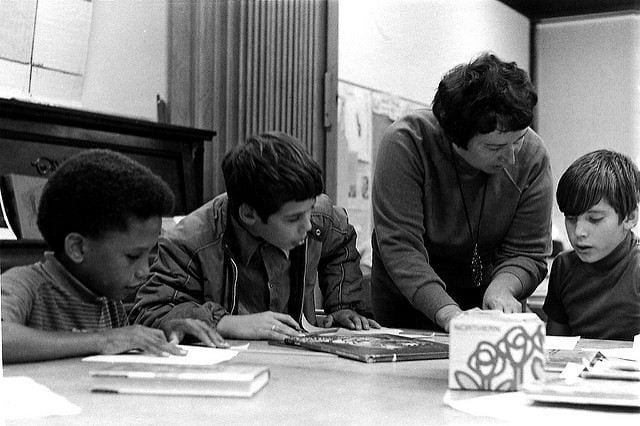Key points:
Educators can embrace AI–with the right training and precautions
Why AI in the classroom needs its own ‘doll test’ 70 years post-Brown
Despite guidance, generative AI remains a challenge for educators
For more news on AI in education, visit eSN’s Digital Learning hub
It seems educators can’t turn on a device or have a conversation without AI working its way into the mix. But AI’s popularity is not without cause, given how often educators are reminded of how AI can personalize learning and how students will need AI skills to compete for future jobs.
With AI dominating headlines in all industries, it’s a relatively common question: Is everything about AI?
During an ISTELive 24 virtual session, presenter Kia Angeles, a training associate at SMS Global Technologies and a technology coach at the Junior Academy for Coding Knowledge (JACK), explored AI’s current role in education, how it can help students with special needs, and how a purpose-driven approach to using AI in the classroom can help educators gain more comfort and familiarity with the technology as it evolves.
In general, Angeles noted, there are three types of AI:
Narrow AI: Siri and Alexa are prime examples of narrow AI
General AI: This type of AI understands, learns, and applies knowledge across a wide range of contexts
Super-intelligent AI: While still speculative, this concept of super-intelligent AI raises profound ethical and existential questions about control and coexistence
Right now, AI is generally used for personalized learning, administrative support, and data analytics. It enhances learning experiences with tailored learning paths and immediate feedback, improves accessibility and inclusivity through assistive and adaptive technologies and language translation, and boosts efficiency and administrative support by automating routine tasks and improving data management.
Despite its potential, AI in the classroom brings with it concerns:
1. Data privacy and security: Risks of data breaches and misuse of information
2. Bias and fairness: Bias in AI systems and troubles ensuring fair treatment
3. Dependence and dehumanization: Reduced human interaction and negative impact on teacher-student relationships
4. Job displacement: Concerns about job loss and “not needing teachers” in existing or new roles
“Developers and educators are encouraged to use AI responsibly, with a clear understanding of its impact on students and society,” Angeles noted.
Angeles encouraged teachers to read AI tools’ data privacy statements, because the responsibility lies with teachers to understand how data is used before the tool is introduced to students.
AI in education carries with it ethical and philosophical implications, too, including how to handle transparency and accountability, along with how to address the role of human teachers and balancing technology with human values.
“We can see that AI can augment teaching, but the human touch remains irreplaceable in fostering empathy, creativity, and critical thinking,” Angeles said. “How do we balance technological advancement with preserving human values and interaction? It’s essential to ensure AI enhances, rather than diminishes, the human elements of education.”
Looking to the future, AI in education is focused on emerging trends and technologies and how predictive analytics can personalize learning experiences, identify at-risk students, and provide early interventions. “This enhances student success and retention rates—they can see their strengths,” Angeles noted.
When it comes to forming long-term visions, the evolving role of educators in the classroom of the future will be critical. “Imagine classrooms equipped with advanced AI tools that facilitate personalized and engaging learning experiences. These classrooms will be dynamic environments where students can explore, experiment, and learn at their own pace,” Angeles said.
“Educators will transition into roles that emphasize mentoring, fostering creativity and emotional support, guiding students through their educational journeys in ways that AI can never replace,” she added.
To truly reap the benefits of AI in education, stakeholders should work to use AI in responsible ways. Educators should ensure their skillset includes using and teaching with AI, but should strive to enhance the human aspect of teaching. Policymakers should enact solid guidelines around data privacy and security while supporting research about AI’s potential in education. And technologists should focus on ethical AI and ensure collaboration with educators.
“Ai is a tool to augment our capabilities, not to replace our humanity,” Angeles said.
During an ISTELive 24 virtual session, presenter Kia Angeles, a training associate at SMS Global Technologies and a technology coach at the Junior Academy for Coding Knowledge (JACK), explored AI’s current role in education AI in Education, Digital Learning, Featured on eSchool News, classroom, digital, digital learning, Education, educators, future, learning, news, visit eSchool News








